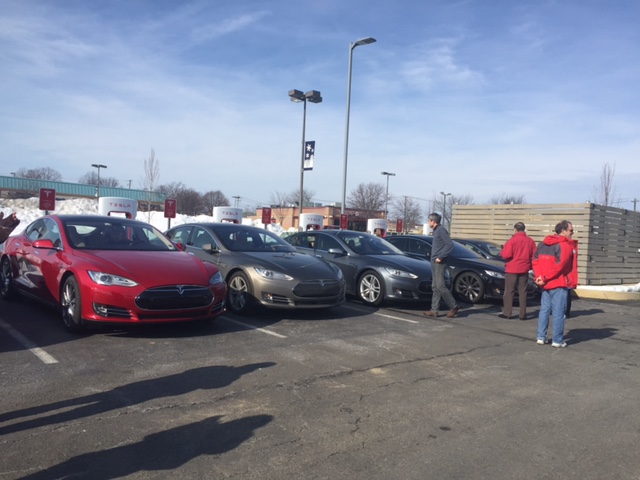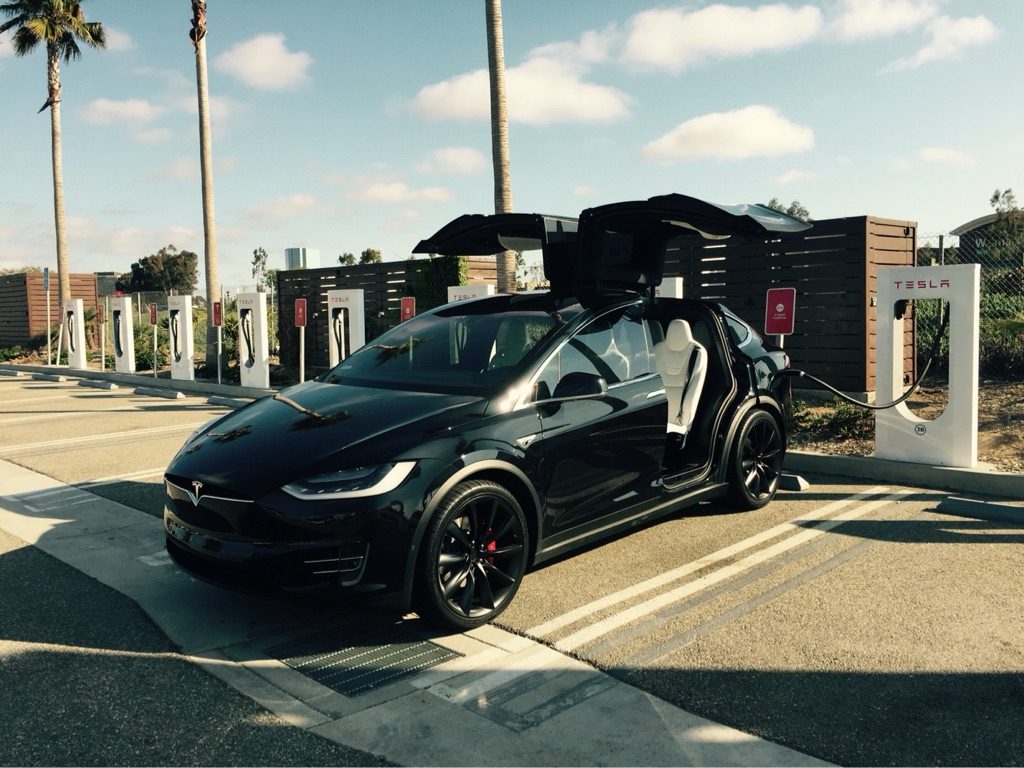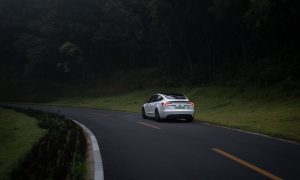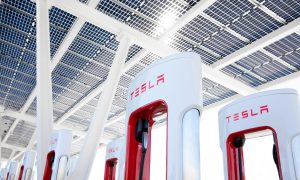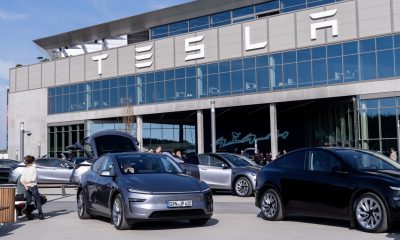News
The Battle of the Supercharger: Congestion in the face of increased Model 3 production
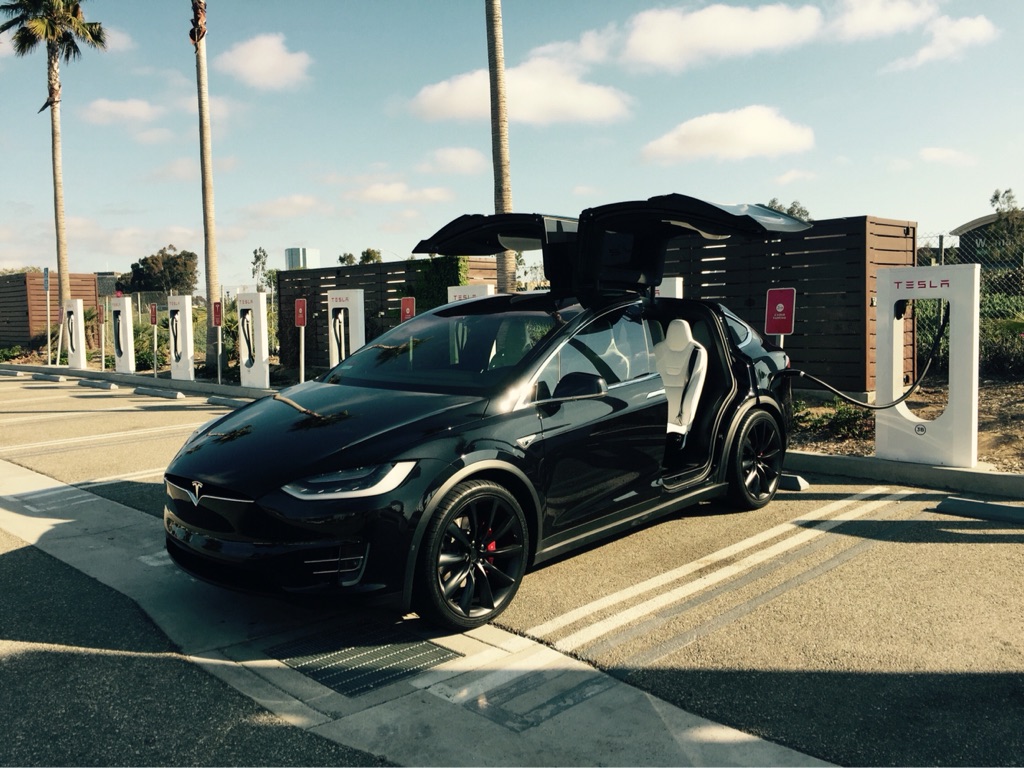
Tesla Supercharger in Allentown, PA
The will they or won’t they argument about free Supercharging for life with Model 3 has been debated backward and forward. Fears have been accelerated since last week’s news of an ambitious goal to get 100,000-200,000 Model 3 vehicles on the road in 2017. Elon’s exact words at the unveil have been analyzed and rehashed time and time again. I won’t venture to assume I know what Tesla will decide, or even give my opinion on how they should price or restrict access. What I can say is that we need a strategy and we need it fast. I call it: etiquette education.
We needn’t mince words here. We’re all adults. We also needn’t take sides on the already exhaustive debate of whether or not it’s proper to charge locally just to save a few bucks. (Opponents argue it’s contrary to the point of chargers, while those for it stand on the ground that they paid for “free for life” access.) All we need to do is spell out good etiquette. I mean really spell it out.
Truth 1: Superchargers are intended to enable long distance travel.
Rule 1
Travel on the network as often as you like, anywhere your 4 wheels can take you.
Truth 2: Superchargers are for charging, not parking.
Rule 2
Charge as much as you need, or even a bit more, then promptly move your vehicle. Do not park overnight, do not go on a shopping spree and absolutely do not use it as a premium parking space without even plugging in.
Tesla Model X at the Oxnard, CA Supercharger via app check-in
Truth 3: Charge rates dramatically slow down after you’ve reached approximately 90% charge. You will thus occupy a stall for much longer than you did for any other 10% portion of your charge.
Rule 3
Do not charge beyond 90% at a Supercharger unless you absolutely need it to get to your next destination (including a buffer of course) or there are many other open stalls.
Truth 4: Waiting in line to charge when you’re on a road trip can derail plans, exacerbate tiredness from traveling, and would all around suck.
Rule 4
If you are charging close to home (whether returning from a road trip or otherwise) and have enough to get there, stay with your car and immediately vacate if or when all of the stalls at that location are occupied.
Long queues known to form around the Tejon Ranch Supercharger
Truth 5: Someone out there either needs or wants to save a few bucks on electricity. Someone out there has no home charging solution available. Someone out there accidentally fried their home charger with a failed DIY attempt and can’t get it fixed until next week.
Rule 5
If intending to visit a local charger just for the sake of charging (eg: not returning from a trip), do so off peak. Do not go during known commuting hours, holidays or busier weekend hours. Plan to charge in the evening, mid-weekday or early morning hours. (Tesla should consider releasing peak charging times per SC location for this and trip planning purposes.) Also refer to rule 2. If you fall into the camp of visiting a local charger just for sake of charging, do not leave your vehicle unattended. Immediately vacate the charging space if or when all of the stalls at that location are occupied.
Truth 6: Tesla knows or can figure out who uses local Superchargers “rather aggressively.”
Rule 6
You may receive a warning letter – with attached peak charging schedule for your local location – that you have been identified as using your local charger aggressively. The letter will remind you that the Supercharger network was intended to enable long distance travel, set Tesla apart from the rest of the industry and bring in sales which ultimately benefits us all and provides funds for additional chargers. (Okay, this one is speculation and wishful thinking on my part. But I think this paired with a rigorous educational program as spelled out above would go a long way.)
No, Model S and X owners don’t deserve some kind of priority and shouldn’t bellyache about the presumed onslaught of Model 3 drivers hogging up all the chargers. After all, a successful Tesla Motors is good for everyone. However even today, we all need a stern lecture on proper Supercharger etiquette and Tesla should feel no shame in very clearly spelling it out to us and the rest of the world. Education is the missing piece here, not some complicated pay-per-use or tiered charging access.
News
Tesla begins Robotaxi certification push in Arizona: report
Tesla seems serious about expanding its Robotaxi service to several states in the coming months.

Tesla has initiated discussions with Arizona transportation regulators to certify its driverless Robotaxi service in the state, as per a recent report from Bloomberg News. The move follows Tesla’s launch of its Robotaxi pilot program in Austin, Texas, as well as CEO Elon Musk’s recent comments about the service’s expansion in the Bay Area.
The Arizona Department of Transportation confirmed to Bloomberg that Tesla has reached out to begin the certification process for autonomous ride-sharing operations in the state. While details remain limited, the outreach suggests that Tesla is serious about expanding its driverless Robotaxi service to several territories in the coming months.
The Arizona development comes as Tesla prepares to expand its service area in Austin this weekend, as per CEO Elon Musk in a post on X. Musk also stated that Tesla is targeting the San Francisco Bay Area as its next major market, with a potential launch “in a month or two,” pending regulatory approvals.
Tesla first launched its autonomous ride-hailing program on June 22 in Austin with a small fleet of Model Y vehicles, accompanied by a Tesla employee in the passenger seat to monitor safety. While still classified as a test, Musk has said the program will expand to about 1,000 vehicles in the coming months. Tesla will later upgrade its Robotaxi fleet with the Cyercab, a two-seater that is designed without a steering wheel.
Sightings of Cybercab castings around the Giga Texas complex suggests that Tesla may be ramping the initial trial production of the self-driving two-seater. Tesla, for its part, has noted in the past that volume production of the Cybercab is expected to start sometime next year.
In California, Tesla has already applied for a transportation charter-party carrier permit from the state’s Public Utilities Commission. The company is reportedly taking a phased approach to operating in California, with the Robotaxi service starting with pre-arranged rides for employees in vehicles with safety drivers.
News
Tesla sets November 6 date for 2025 Annual Shareholder Meeting
The automaker announced the date on Thursday in a Form 8-K.

Tesla has scheduled its 2025 annual shareholder meeting for November 6, addressing investor concerns that the company was nearing a legal deadline to hold the event.
The automaker announced the date on Thursday in a Form 8-K submitted to the United States Securities and Exchange Commission (SEC). The company also listed a new proposal submission deadline of July 31 for items to be included in the proxy statement.
Tesla’s announcement followed calls from a group of 27 shareholders, including the leaders of large public pension funds, which urged Tesla’s board to formally set the meeting date, as noted in a report from The Wall Street Journal.
The group noted that under Texas law, where Tesla is now incorporated, companies must hold annual meetings within 13 months of the last one if requested by shareholders. Tesla’s previous annual shareholder meeting was held on June 13, 2024, which placed the July 13 deadline in focus.
Tesla originally stated in its 2024 annual report that it would file its proxy statement by the end of April. However, an amended filing on April 30 indicated that the Board of Directors had not yet finalized a meeting date, at least at the time.
The April filing also confirmed that Tesla’s board had formed a special committee to evaluate certain matters related to CEO Elon Musk’s compensation plan. Musk’s CEO performance award remains at the center of a lengthy legal dispute in Delaware, Tesla’s former state of incorporation.
Due to the aftermath of Musk’s legal dispute about his compensation plan in Delaware, he has not been paid for his work at Tesla for several years. Musk, for his part, has noted that he is more concerned about his voting stake in Tesla than his actual salary.
At last year’s annual meeting, TSLA shareholders voted to reapprove Elon Musk’s compensation plan and ratified Tesla’s decision to relocate its legal domicile from Delaware to Texas.
Elon Musk
Grok coming to Tesla vehicles next week “at the latest:” Elon Musk
Grok’s rollout to Tesla vehicles is expected to begin next week at the latest.

Elon Musk announced on Thursday that Grok, the large language model developed by his startup xAI, will soon be available in Tesla vehicles. Grok’s rollout to Tesla vehicles is expected to begin next week at the latest, further deepening the ties between the two Elon Musk-led companies.
Tesla–xAI synergy
Musk confirmed the news on X shortly after livestreaming the release of Grok 4, xAI’s latest large language model. “Grok is coming to Tesla vehicles very soon. Next week at the latest,” Musk wrote in a post on social media platform X.
During the livestream, Musk and several members of the xAI team highlighted several upgrades to Grok 4’s voice capabilities and performance metrics, positioning the LLM as competitive with top-tier models from OpenAI and Google.
The in-vehicle integration of Grok marks a new chapter in Tesla’s AI development. While Tesla has long relied on in-house systems for autonomous driving and energy optimization, Grok’s integration would introduce conversational AI directly into its vehicles’ user experience. This integration could potentially improve customer interaction inside Tesla vehicles.
xAI and Tesla’s collaborative footprint
Grok’s upcoming rollout to Tesla vehicles adds to a growing business relationship between Tesla and xAI. Earlier this year, Tesla disclosed that it generated $198.3 million in revenue from commercial, consulting, and support agreements with xAI, as noted in a report from Bloomberg News. A large portion of that amount, however, came from the sale of Megapack energy storage systems to the artificial intelligence startup.
In July 2023, Musk polled X users about whether Tesla should invest $5 billion in xAI. While no formal investment has been made so far, 68% of poll participants voted yes, and Musk has since stated that the idea would be discussed with Tesla’s board.
-

 Elon Musk1 week ago
Elon Musk1 week agoTesla investors will be shocked by Jim Cramer’s latest assessment
-

 Elon Musk3 days ago
Elon Musk3 days agoElon Musk confirms Grok 4 launch on July 9 with livestream event
-

 Elon Musk14 hours ago
Elon Musk14 hours agoxAI launches Grok 4 with new $300/month SuperGrok Heavy subscription
-

 News7 days ago
News7 days agoTesla Model 3 ranks as the safest new car in Europe for 2025, per Euro NCAP tests
-

 Elon Musk2 weeks ago
Elon Musk2 weeks agoA Tesla just delivered itself to a customer autonomously, Elon Musk confirms
-

 Elon Musk1 week ago
Elon Musk1 week agoxAI’s Memphis data center receives air permit despite community criticism
-

 Elon Musk2 weeks ago
Elon Musk2 weeks agoTesla’s Omead Afshar, known as Elon Musk’s right-hand man, leaves company: reports
-

 News2 weeks ago
News2 weeks agoXiaomi CEO congratulates Tesla on first FSD delivery: “We have to continue learning!”

